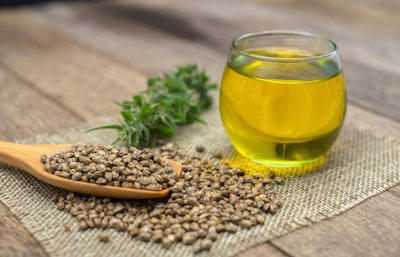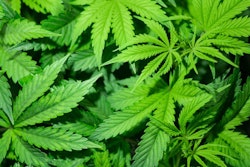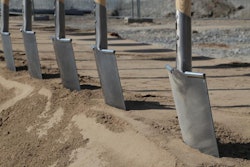
Researchers tout nutritional promise of hemp animal feed, but regulators say question of safety persists
Industry may hope to see a more rapid approval of hemp ingredients in animal feed, but officials with the U.S. Food and Drug Administration (FDA) say more work is needed to prove trace levels of cannabinoids contained within hemp won’t accumulate in animal products for human consumption.
Leaders from industry groups, research institutions and regulators met on August 9 for a full day of live panels reviewing research on hemp-based feed ingredients, current regulatory requirements and other concerns related to feeding livestock hemp. But while the discussion yielded clarification on several technical issues, regulators who spoke on the panels maintained their position that they need more evidence showing hemp is safe for animal consumption — and for the humans who eat animal products.
An application to approve feeding hemp seed cake to laying hens is under review by the FDA and the Association of American Feed Control Officials (AAFCO), but the application has encountered numerous delays, according to Rajasekhar Kasula, senior vice president and chief nutrition officer at Wenger Feeds, and the principal investigator on the hemp seed cake application, which was funded and submitted by the Hemp Feed Coalition.
Kasula said he sought input from FDA’s Center for Veterinary Medicine (CVM) regarding the kind of studies and data that would be required for his application before formally beginning the process. However, six months after submitting the application, he said CVM came back to him indicating that they would need other data not included in his initial report, which necessitated additional studies.
“We need a guidance on what exactly is needed, rather than going back and forth and every time spending six months to find what is needed in addition,” Kasula said. “Give us a list of parameters and specifications for each of those parameters that need to be demonstrated.”
But Charlotte Conway, a deputy director in the division of animal food ingredients within the CVM, said this back and forth was a necessary part of the regulatory process.
“When we review protocols, our comments are on if we think the study is likely to answer the questions that need to be addressed,” she said. “And sometimes the results of the study create new questions and that can result in rounds of questions.”
Some of the FDA’s biggest concerns about hemp-derived feed ingredients, Conway said, is the potential for the drug-like components of the plants, called cannabinoids, to accumulate in animal products and enter the human food supply. Research by Massimo Bionaz, an associate professor of dairy nutrigenomics at Oregon State University, and other scientists has concluded this is a possibility when livestock are fed hemp biomass.
Cannabinoids are considered a contaminant in the GRAS response to hemp seed products by the FDA because the seeds themselves do not produce the compounds. This is why the hemp industry considers them contaminants in hempseed byproducts, according to Hunter Buffington, who represented the National Industrial Hemp Council through member company element6 Dynamics, where she is vice president of policy and advocacy. However, cannabinoids may be present in hemp seed products if the seeds are not completely cleaned of plant material while being processed, said Buffington, who formerly served as the executive director of the Hemp Feed Coalition.
In his own feeding trials, Kasula said, he did not find evidence that feeding hemp seed cake would lead to an accumulation of cannabinoids in poultry. And there are nutritional qualities that could make hemp an ideal feed ingredient, he and other researchers said.
“When I started to do research in 2019, I knew almost nothing about hemp,” Bionaz said. “But the first time I saw an analysis of the biomass I was blown away, because the parameters look a lot like alfalfa. It’s a good feed on paper.”
In some ways, hemp may even prove superior to alfalfa, Bionaz continued. It contains a slightly higher amount of fat, including desirable fatty acids, and a particularly interesting mineral profile. But he said his feeding trials have identified a potential issue with palatability. Lambs and dairy cows fed spent hemp biomass decreased their feed intake, and thus experienced a slight loss of performance. However, they seemed to adjust to the new feed after a few months, Bionaz said.











